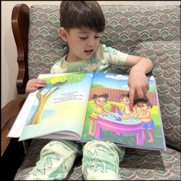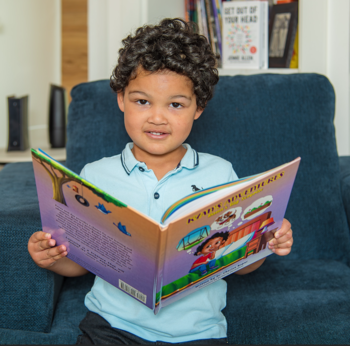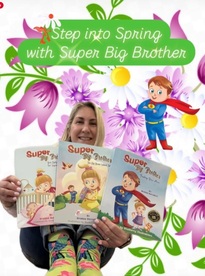Early Days of AI in Writing
The earliest AI writing tools were far from the sophisticated platforms we see today. In the beginning, they were designed to handle straightforward, functional tasks such as generating weather reports, stock market updates, or sports recaps. For example, a system could take baseball statistics from a game and automatically create a short article that read: “The Red Sox defeated the Yankees 5–3 on Tuesday evening.” While useful for speed and efficiency, the text often felt robotic, formulaic, and devoid of any personality. These tools operated on strict rules and patterns, producing content that was correct but rarely compelling.
Over time, improvements in machine learning and natural language processing allowed AI to move beyond rigid templates. Suddenly, it wasn’t just about filling in blanks with data—it was about recognizing rhythm, tone, and even storytelling patterns. For instance, instead of simply writing “rain is expected in New York,” more advanced systems could produce something closer to: “New Yorkers should keep their umbrellas handy as showers are expected to sweep through the city this afternoon.” The difference may seem small, but it marked a shift from technical communication to writing that carried nuance and voice.
This evolution opened the door for creative applications. Writers experimenting with early AI tools began noticing that the technology could suggest character names, basic story arcs, or dialogue snippets. A children’s author might input a simple prompt such as “a brave rabbit in a magical forest,” and the system could generate an outline where the rabbit faces challenges, meets animal friends, and learns a lesson about courage. While the output often needed refinement, it gave authors a springboard to expand upon. These examples showed that AI could become more than a utility for technical writing—it could act as a collaborator, offering sparks of inspiration where human imagination could take over and flourish.
AI as a Partner in Creative Writing
Today, AI is increasingly seen not as a replacement for human imagination but as a partner that helps bring stories to life. Authors across genres, and especially children’s book writers, are using AI-powered writing assistants to brainstorm ideas, refine plots, polish dialogue, and edit text for clarity, grammar, and flow. These systems work like having a tireless co-writer who can offer endless suggestions, while still leaving the creative choices firmly in the hands of the author. Instead of dictating the story, AI provides prompts, insights, and variations that can spark inspiration whenever the writer feels stuck.
For example, an author working on a bedtime story about a curious fox might ask an AI assistant to suggest three different endings: one where the fox learns the value of friendship, another where he discovers a hidden treasure, and a third where he realizes that home was the greatest adventure all along. Seeing these alternate outcomes side by side allows the writer to choose the most fitting path for the narrative—or even blend elements from all three to create a richer ending. This kind of instant feedback can save days of brainstorming and open up creative directions the author might never have considered.
AI can also strengthen character development by suggesting motivations and backstories. If an author introduces a shy rabbit character, they might ask: “Why is the rabbit shy?” An AI tool could propose options such as: the rabbit once lost a race and fears failing again, the rabbit grew up in a bustling forest and feels overwhelmed by noise, or the rabbit has a secret talent like singing but is afraid to share it. Each of these possibilities gives the writer material to build emotional depth into the character, making the story more engaging for young readers.
Children’s books often rely on rhythm, rhyme, and repetition. Here, AI-driven language models can suggest playful rhyming lines or check whether sentences are age-appropriate. Suppose an author writes: “The dragon was enormous and intimidating.” An AI system might suggest a simpler version for a younger audience: “The dragon was big and a little scary.” Alternatively, if the author wants a rhyming couplet, AI might propose: “The dragon was bold, with scales of gold.” These subtle refinements keep the language lively and accessible, while still preserving the writer’s intent.
Beyond text, AI can even propose scene outlines or chapter structures. For instance, if a story is about two siblings traveling through a magical forest, the author might ask the system to break the journey into five key scenes. The assistant could outline: (1) entering the forest and meeting a talking owl, (2) solving a riddle to cross a glowing bridge, (3) facing a storm that tests their teamwork, (4) discovering a hidden garden, and (5) finding their way home with new wisdom. The author can then expand these moments with personal creativity, using the outline as a scaffold rather than a final draft.
The value of this partnership lies in how AI enhances human imagination. Writers remain the architects of their stories, shaping voice, emotion, and meaning, but they now have a versatile assistant who can provide options at any stage of the process. Whether it’s rewriting a sentence for smoother rhythm, brainstorming character quirks, or offering alternative story arcs, AI helps writers see possibilities beyond their first instincts. For children’s book authors in particular, this collaboration makes the process of writing both more efficient and more playful—reminding them that creativity thrives on exploration, experimentation, and discovery.
Practical Uses for Authors
AI is not just a creative companion; it is also a practical tool that supports authors and small publishers across the entire production pipeline. From the earliest brainstorming sessions to the final polish before printing, AI-powered assistants can simplify time-consuming tasks and open new possibilities for storytelling. By weaving these tools into their workflow, writers can focus more on creativity and less on technical hurdles.
- Draft scene outlines and dialogue suited to a particular genre. Authors working on a fantasy adventure, for example, might use AI to sketch a five-chapter outline that includes key conflicts, discoveries, and resolutions. For dialogue, an AI assistant can suggest how a wise old owl might speak differently from an eager young squirrel, ensuring that each character has a distinct voice. These structured prompts save time while leaving plenty of room for the author’s unique storytelling style.
- Generate age-appropriate language and vocabulary lists. Writing for children requires special attention to word choice and reading level. AI systems can scan text and suggest simpler alternatives, flagging phrases that may be too advanced for younger readers. An author drafting a picture book might learn that “gigantic” could be replaced with “big,” or “adventurous” with “brave,” depending on the target age group. This ensures the story is both engaging and accessible.
- Run readability checks and rewrite suggestions. Beyond vocabulary, AI can test a manuscript’s overall readability, highlighting sentences that may feel too long or complex for the intended audience. For instance, “The dragon soared magnificently through the turbulent night sky” might be simplified to “The dragon flew high in the stormy night.” These adjustments maintain the story’s magic while aligning it with a child’s reading ability.
- Create personalized stories for children. One of the most delightful uses of AI is in personalization. Authors can design stories that insert a child’s name, favorite animal, or hometown into the narrative. Imagine a bedtime story where the main character shares the same name as the young reader and embarks on an adventure in a forest filled with their favorite creatures. This personal touch increases engagement and makes the book feel uniquely special to each child.
Beyond these uses, AI can also assist with editing, layout suggestions, and even draft illustration concepts that guide professional artists. For independent authors and small publishers, who often balance creative work with production challenges, these practical applications reduce barriers and create space for more imagination. Instead of replacing the human touch, AI strengthens it—helping authors deliver polished, engaging, and memorable stories with greater ease.
As we look beyond practical tools, the next step is to explore how AI also becomes a true creative partner in the writing process.
Revolutionizing Children’s Book Writing
Children’s book writing is being transformed by intelligent tools that help authors plan, draft, and polish stories more efficiently. Whether you’re exploring children’s book writing services or preparing to self-publish children’s books, modern workflows combine human imagination with practical assistance to produce clearer, more engaging manuscripts for young readers.
Early-stage development — concept, theme, and structure — benefits from rapid ideation. Writers can generate multiple plot outlines, refine character arcs, and test pacing strategies so each scene serves the story’s emotional and educational goals. This makes it easier to develop picture book concepts, chapter-book frameworks, or early-reader series with consistent voice and purpose.
Language and readability are critical in books for children. Tools that analyze vocabulary levels and sentence complexity help authors target specific age groups. Whether you need phrases suitable for preschoolers or rhythmic language for early readers, attention to readability helps your manuscript perform better in classrooms, libraries, and online marketplaces.
Revision and editing are more focused and efficient with feedback that flags pacing problems, weak dialogue, or repetitive phrasing. This complements professional children’s book editing services by producing stronger drafts and reducing revision cycles—important whether you choose traditional publishing or self-publishing children’s books.
For authors offering their work to publishers or using children’s book writing services, a polished, well-structured manuscript increases the chance of acceptance and helps marketing efforts later. Ultimately, blending thoughtful craft with smart tools allows writers to create stories that educate, entertain, and stay memorable — helping more children discover the joy of reading.
Illustration and Layout Benefits for Children’s Books
Illustrations are the heart of every children’s book. They do more than decorate pages—they set the emotional tone, bring characters to life, and spark a child’s imagination in ways words alone cannot. While AI can assist with early concepts, its role is best suited for prototypes rather than final artwork.
AI can quickly generate multiple versions of a scene in varied styles, helping authors explore visual ideas. However, AI-generated illustrations often lack consistency. Characters may change appearance between pages, details can be missing, and poses or expressions may look unnatural. For children’s books, these inconsistencies can affect engagement and overall quality.
Professional children’s book illustration services ensure every character, background, and object remains consistent throughout the story. Skilled illustrators follow directions meticulously, bringing subtle expressions and intricate details to life—achieving a level of precision AI cannot match. Combined with expert book designers, this results in a cohesive layout that balances text with imagery, enhances readability, and meets publishing standards.
While AI layout tools can help test text flow, professional design is essential for a polished, print-ready book. Designers handle everything from cover creation to interior formatting, ensuring your book is visually appealing and ready for distribution on platforms like Amazon, bookstores, or libraries.
In short, AI is a useful tool for experimentation, but professional book illustrator and designers remain key to creating a captivating children’s book. To explore how skilled illustrators can bring your story to life, you can visit our Blueberry Illustrations page and see examples of high-quality children’s book illustration services that combine creativity, consistency, and expert design.
Marketing, SEO, and Pricing
AI is becoming an invaluable tool for marketing and promoting books. By analyzing search trends and audience behavior, AI can suggest effective keywords, optimize titles and descriptions, and even recommend content strategies that improve your book’s online visibility. These insights help authors reach the right readers and maximize engagement without extensive manual research.
For those concerned about budgeting or exploring self-publishing options, AI can also assist with cost estimates and package comparisons. This allows you to plan your publishing journey efficiently, ensuring that your investment aligns with your goals. To see how professional services complement AI-assisted workflows, you can explore our pricing page and affordable publishing packages. These resources demonstrate how expert illustration, book design, and publishing support integrate seamlessly with AI tools to produce high-quality, market-ready books.
By integrating AI into your marketing, SEO, and pricing strategy, you can save time, make informed decisions, and enhance the overall success of your publishing journey—all while ensuring that your book benefits from professional design and illustration services.
Editing and Professional Touches
AI editing tools are excellent for catching grammar errors, improving sentence flow, and suggesting readability enhancements. They provide speed and efficiency that can save authors hours in the revision process. However, a human editor brings an irreplaceable level of insight and sensitivity. Human editors can understand tone, cultural nuances, emotional pacing, and the subtle rhythms of storytelling that make readers, especially children, return to a book again and again.
For authors who want to combine the efficiency of AI with the finesse of human expertise, our editorial services offer the perfect solution. We provide a meticulous final pass that ensures your manuscript not only reads smoothly but resonates emotionally with its audience. You can learn more about our tailored approach on our book editing page, where we showcase how professional editing elevates the quality of children’s books from good to exceptional.
Personalization at Scale
AI is transforming how books can connect with individual readers. Personalized stories can adapt to a child’s name, favorite pet, hometown, or even specific interests, creating a unique and memorable reading experience. This level of customization helps forge a stronger emotional connection and encourages repeated reading.
Beyond individual readers, schools, literacy programs, and educational publishers can leverage AI to tailor content to different comprehension levels, making reading more accessible and engaging for a variety of learners. For creators and authors, AI also makes it feasible to produce multiple bespoke editions without the high costs typically associated with custom publishing. This combination of personalization and scalability opens up new creative and commercial opportunities, allowing your stories to reach audiences in highly meaningful ways.
Ethical Considerations and Authenticity
As AI becomes a more common tool in children’s book creation, authors and publishers face important ethical responsibilities. Questions around originality, copyright, and proper attribution are more critical than ever. It’s essential to be transparent about the role AI plays in your creative process. Decide how you will disclose AI assistance in your work, and ensure that any AI-generated text or images used commercially have the correct licenses to avoid legal issues.
Maintaining the human element is key. While AI can assist with writing, editing, or illustration, the author’s voice, intention, and care for the reader remain central. Thoughtful storytelling, emotional depth, and cultural sensitivity are aspects that AI cannot replicate fully. By balancing AI tools with human creativity, you ensure that your children’s literature remains authentic, meaningful, and capable of connecting deeply with young readers.
The Future: Interactive and Immersive Stories
The next decade promises exciting innovations in how children experience stories. AI-powered interactive books could allow readers to influence the plot in real-time, choosing paths, altering character traits, or exploring multiple story outcomes. Augmented reality (AR) and immersive audio experiences, paired with AI-generated content, may create fully multisensory reading adventures that go beyond the traditional printed page.
Hyper-personalized story apps are also expected to expand, delivering fresh, tailored tales on demand based on a child’s interests, reading level, or favorite characters. For authors and creators, these technologies open opportunities to experiment with new storytelling formats, reach wider audiences, and provide experiences that are both educational and highly engaging. By embracing AI thoughtfully, writers can innovate while preserving the timeless qualities that make children’s books memorable.
How to Make AI Work for Your Project
Start small and iterate. Use AI to prototype ideas and illustration styles, then bring in human specialists for editing and final artwork. If you’re investigating specific services, our pages on pricing and packages can help you choose the right level of support: visit our affordable publishing packages and price pages. We also publish testimonials and case studies that demonstrate how authors blended AI tools with our services: see testimonials and client stories for inspiration.
Practical Tips for Authors
To get the most from AI without losing your voice:
- Use AI as a sounding board, not the sole author.
- Keep a clear editorial brief so AI outputs match your intent.
- Combine AI drafts with human editing to preserve authenticity.
- Experiment with illustration styles but hire a professional for final art when possible.
- Invest time in metadata and keywords so your work is discoverable on platforms like Amazon.
Closing Thoughts
AI is changing how stories are written, illustrated, and sold, but it does not replace the storyteller’s heart. Instead, it widens creative possibilities and lowers financial and logistical barriers, empowering more voices to reach readers. Whether you are an experienced publisher, a first-time author, or a parent curious about personalized stories, AI tools combined with professional services create a practical and exciting path to publication.
If you’re wondering how long does it take to self publish a book, check our guide for a realistic timeline and steps: How long does it take to self publish a book. Combining AI with experienced service providers reduces bottlenecks and helps you meet realistic milestones.
To explore more self publishing tips and resources that can guide you in writing, designing, and publishing your book, click on this link.
Explore our related services: Editing Services | Publishing Packages | Testimonials & Reviews.








































































































